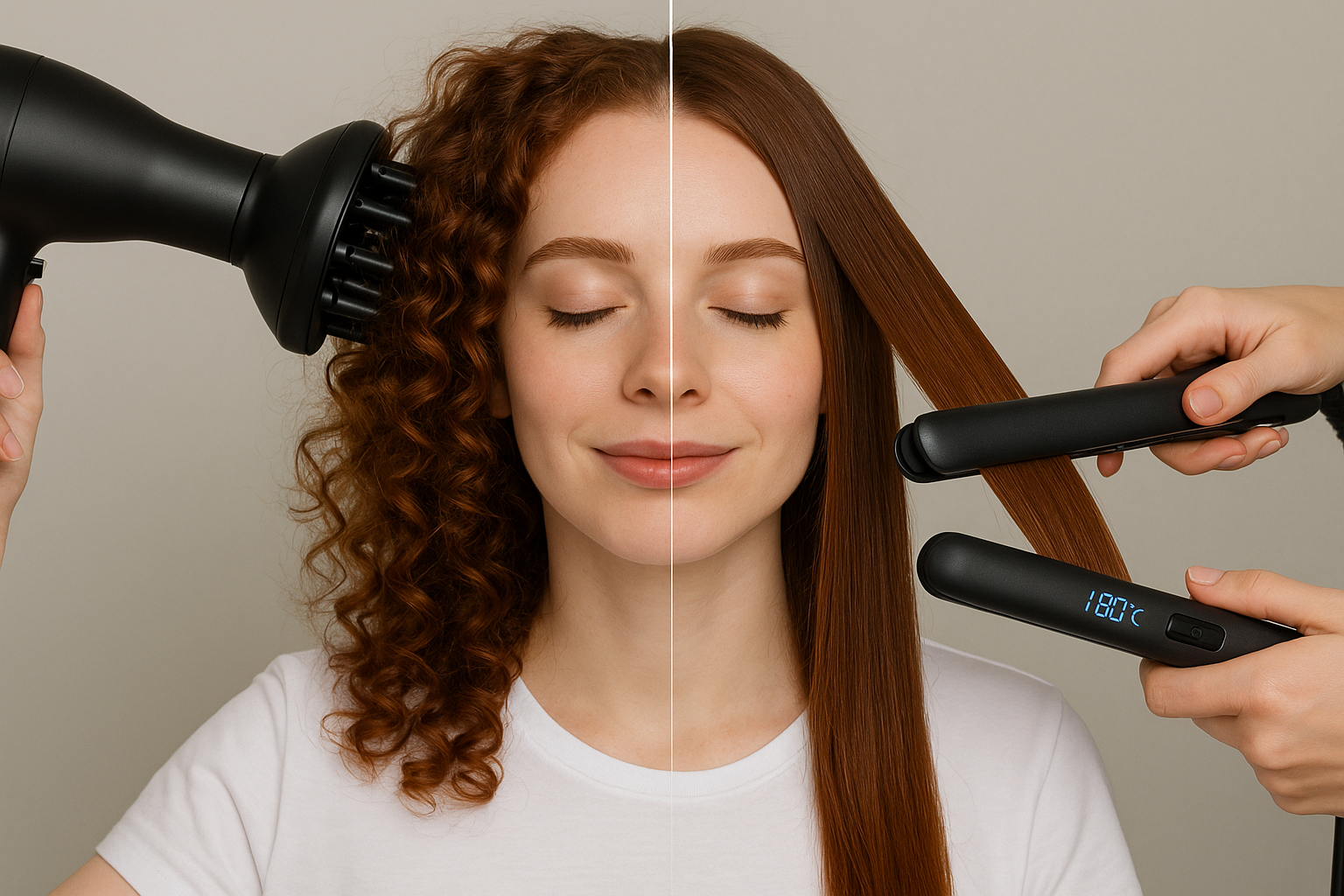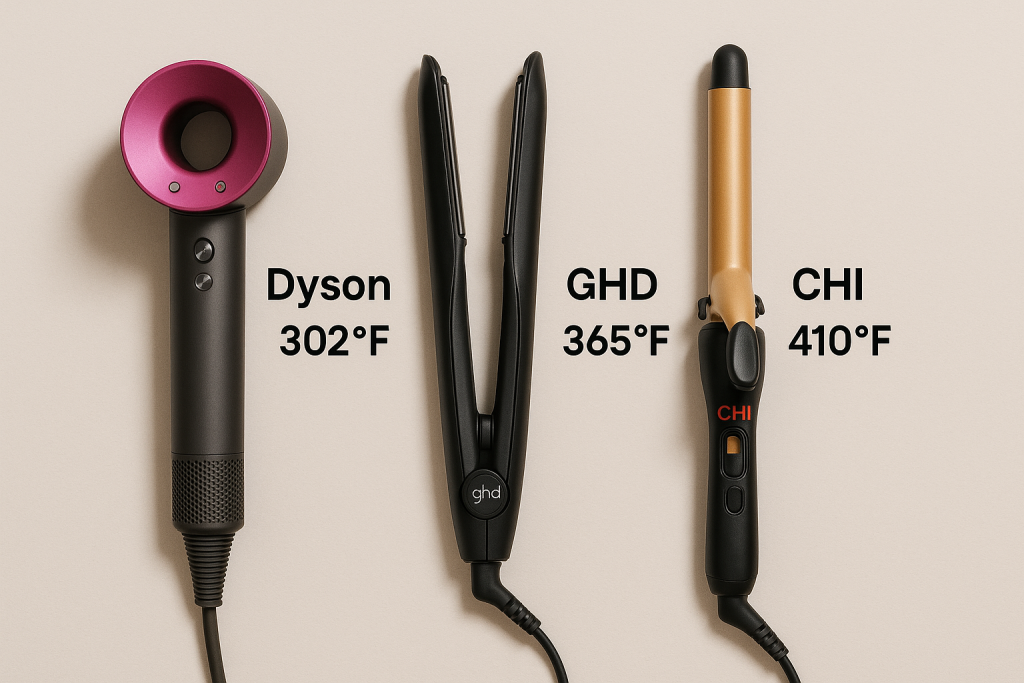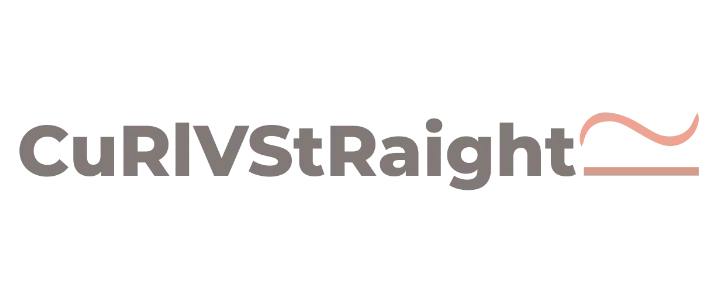
1. Why Heat Styling Rules Matter
We all love the feeling of fresh curls or that sleek straight finish — but heat is a double-edged sword.
It can transform your look instantly, or damage your strands long-term.
Your hair’s texture determines just how much heat it can take — and ignoring that difference is one of the biggest causes of dryness, frizz, and breakage.
✨ Here’s the truth: The same flat iron setting that gives straight hair a soft wave can literally fry curls.
That’s why learning the heat styling rules — what each hair type can and can’t handle — is key to keeping your hair beautiful and healthy.
📎 External DoFollow Link: Healthline – How to Prevent Heat Damage When Styling Hair
2. Understanding How Heat Affects Each Hair Type
Curly & Coily Hair
- Naturally more porous and fragile.
- Heat removes the moisture that keeps curls defined, leading to frizz and loss of pattern.
- Overheating can cause “curl memory loss” — when curls stop bouncing back even after washing.
Wavy Hair
- Sits between straight and curly — moderate porosity but sensitive to overuse.
- Too much heat causes limp waves and split ends.
Straight Hair
- Has smoother cuticles and natural shine but is prone to heat oxidation — making it dull and straw-like if overheated.
💡 Fun Fact: Hair burns at around 450°F (232°C). But for many textures, damage starts at just 350°F (176°C).
📎 Internal Link: Read: Moisture Balance 101 — How to Keep Curly Hair Hydrated and Straight Hair Light
3. The Safe Temperature Chart: What Your Hair Can Handle
| Hair Type | Safe Temperature Range | Styling Tool Recommendations | Key Notes |
|---|---|---|---|
| Curly Hair (3A–3C) | 280°F–350°F (140–175°C) | Dyson Corrale, Babyliss Curling Wand | Always use a heat protectant + diffuser for volume. |
| Coily Hair (4A–4C) | 300°F–360°F (150–182°C) | RevAir Reverse Air Dryer, CHI Flat Iron | Limit straightening to once a week; deep condition after. |
| Wavy Hair (2A–2C) | 260°F–340°F (126–171°C) | GHD Unplugged, Revlon One-Step Styler | Keep passes quick; don’t exceed 3–4 times per section. |
| Straight Hair (1A–1C) | 250°F–330°F (121–165°C) | Dyson Airwrap, Remington Ceramic Iron | Avoid daily heat; alternate with air-dry days. |
💬 The finer your hair, the lower the temperature should be. You don’t need extreme heat for effective styling.
📎 External DoFollow Link: Byrdie – Ideal Heat Settings for Hair Tools
4. 5 Essential Heat Styling Rules to Protect Every Texture

1. Always Start with Protection
Never apply heat to unprotected hair.
Use a heat protectant like:
- TRESemmé Thermal Creations Spray
- Living Proof Restore Perfecting Spray
- Olaplex No.9 Bond Protector Serum
💡 Bonus tip: Look for products with silicones like dimethicone — they form a protective film that resists direct heat.
2. Dry Before You Apply
Heat tools + damp hair = steam damage.
This happens when internal water rapidly evaporates, causing cracks in the hair shaft.
Curly & Coily Hair:
Air-dry to 80% before using a diffuser or straightener.
Wavy & Straight Hair:
Use a microfiber towel or cool blow-dry first to remove excess moisture.
3. One Pass Only
If your straightener or curling iron is high-quality, you only need one or two passes.
More than that overheats and strips natural oils from your strands.
💬 Think of it like ironing silk — gentle pressure, short contact, smooth glide.
📎 Internal Link: Read: 5 Powerful Reasons Why Morning vs Night Wash Can Change Your Hair Type’s Health
4. Choose the Right Tool for Your Texture
Different hair types need different heating technologies.
| Tool Type | Best For | Why It Works |
|---|---|---|
| Ceramic Plates | Fine & Straight Hair | Even heat distribution |
| Titanium Plates | Coily & Curly Hair | High heat for stubborn strands |
| Tourmaline Coating | Wavy Hair | Reduces frizz and boosts shine |
| Diffuser Attachment | Curly Hair | Maintains natural curl pattern |
💡 Dyson Airwrap and RevAir are favorites because they use controlled airflow instead of extreme heat.
📎 External DoFollow Link: Allure – Top-Rated Hair Styling Tools for 2025
5. Don’t Forget to Cool It Down
After styling, let your hair cool in place.
This helps “set” the style while reducing stress on your cuticle layer.
Curly Hair: Clip curls in shape while they cool.
Straight Hair: Run fingers gently through for movement.
5. How to Repair Heat Damage
If your hair feels rough, dull, or frizzy even after conditioning — that’s a sign of heat damage.
Quick Repair Routine:
- Switch to a sulfate-free shampoo (Olaplex No.4 Bond Maintenance).
- Use a bond-repair mask weekly (K18 Leave-In Molecular Repair).
- Cut off burnt ends every 6–8 weeks.
- Limit heat to once per week max.
📎 Internal Link: Read: Deep Conditioning — Why Curly Hair Needs It More Often
6. Product and Tool Recommendations
| Category | Recommended For | Product Name |
|---|---|---|
| Heat Protectant | All Hair Types | Olaplex No.9, TRESemmé Thermal Spray |
| Pre-Styling Serum | Curly & Coily | Mielle Rosemary Mint Oil |
| Post-Styling Shine Oil | Straight & Wavy | Moroccanoil Light Treatment |
| Repair Mask | All Textures | K18 Leave-In or Olaplex No.8 Moisture Mask |
| Styling Tool | Curly | Dyson Supersonic + Diffuser |
| Straight | GHD Platinum+ Styler |
💡 Invest once in quality — cheap tools often have uneven heat that burns hair faster.
📎 External DoFollow Link: Vogue – Best Hair Repair Products After Heat Damage
7. Climate & Lifestyle Tips for GCC and Global Readers
In GCC (UAE, KSA, Qatar, Oman):
- High humidity means more frizz and faster moisture loss.
- Always use anti-humidity sprays after styling (Living Proof Humidity Shield).
- Limit straightening — curls revert faster in humid air.
In Cooler or Drier Climates:
- Indoor heating dries hair — use hydrating mists between heat sessions.
- Add lightweight oils (argan, jojoba) after heat styling.
- Deep condition weekly to restore shine and elasticity.
📎 Internal Link: Read: Natural Oils in Daily Haircare for Curly vs Straight Hair
Heat styling doesn’t have to mean heat damage.
When you understand the heat styling rules — what each hair type can and can’t handle, you can enjoy gorgeous styles without sacrificing health.
🔥 Curly & Coily Hair: Low heat, high moisture, protective prep.
🌤️ Wavy Hair: Moderate heat, quick passes, lightweight finishes.
✨ Straight Hair: Gentle heat, sleek edges, volume boosters.
No matter your texture, remember — healthy shine beats temporary style every time.
Use the right tools, set safe limits, and treat your hair like silk.
📎 External DoFollow Link: American Academy of Dermatology – Hair Protection Tips


Leave a Reply